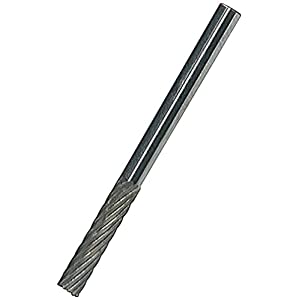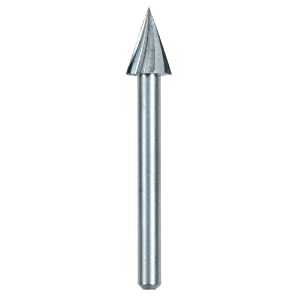A
Anonymous
Guest
Hello members,
I recently bought 3 pieces of graphite/carbon blocks, (well, one of them is a bar) and I'm waiting for them to arrive. But I have a few questions and was wanting some advice.
Q1. Can I use a zipsaw (a Black&Decker HS600) to cut the carbon into smaller pieces without chipping it or breaking it?
Q2. I have a rotary tool and I have a set of Dremel type attachments, but was wondering if any of the attachments can be used to core out the carbon?
Q3. How can I determine that the core hole I make out of the carbon will be able to hold 1 Troy oz of gold and also 1 troy oz of silver, or any Troy oz I want to make?
For Q3, I know that the density of gold and silver are different, so I'm going to be making moulds that will be specific to the metal I'm working with and not use it with other metals, so I don't contaminate the metals.
Q4. For the 3 pieces I purchased, how many moulds could I make? Below are the dimensions for each.
Block 1. http://www.ebay.com/itm/110838815404?ssPageName=STRK:MEWNX:IT&_trksid=p3984.m1439.l2649
Block 2. http://www.ebay.com/itm/110854447764?ssPageName=STRK:MEWNX:IT&_trksid=p3984.m1439.l2649
Bar/Rod http://www.ebay.com/itm/110861996944?ssPageName=STRK:MEWNX:IT&_trksid=p3984.m1439.l2649
Thanks in advance.
testerman
I recently bought 3 pieces of graphite/carbon blocks, (well, one of them is a bar) and I'm waiting for them to arrive. But I have a few questions and was wanting some advice.
Q1. Can I use a zipsaw (a Black&Decker HS600) to cut the carbon into smaller pieces without chipping it or breaking it?
Q2. I have a rotary tool and I have a set of Dremel type attachments, but was wondering if any of the attachments can be used to core out the carbon?
Q3. How can I determine that the core hole I make out of the carbon will be able to hold 1 Troy oz of gold and also 1 troy oz of silver, or any Troy oz I want to make?
For Q3, I know that the density of gold and silver are different, so I'm going to be making moulds that will be specific to the metal I'm working with and not use it with other metals, so I don't contaminate the metals.
Q4. For the 3 pieces I purchased, how many moulds could I make? Below are the dimensions for each.
Block 1. http://www.ebay.com/itm/110838815404?ssPageName=STRK:MEWNX:IT&_trksid=p3984.m1439.l2649
Block 2. http://www.ebay.com/itm/110854447764?ssPageName=STRK:MEWNX:IT&_trksid=p3984.m1439.l2649
Bar/Rod http://www.ebay.com/itm/110861996944?ssPageName=STRK:MEWNX:IT&_trksid=p3984.m1439.l2649
Thanks in advance.
testerman











